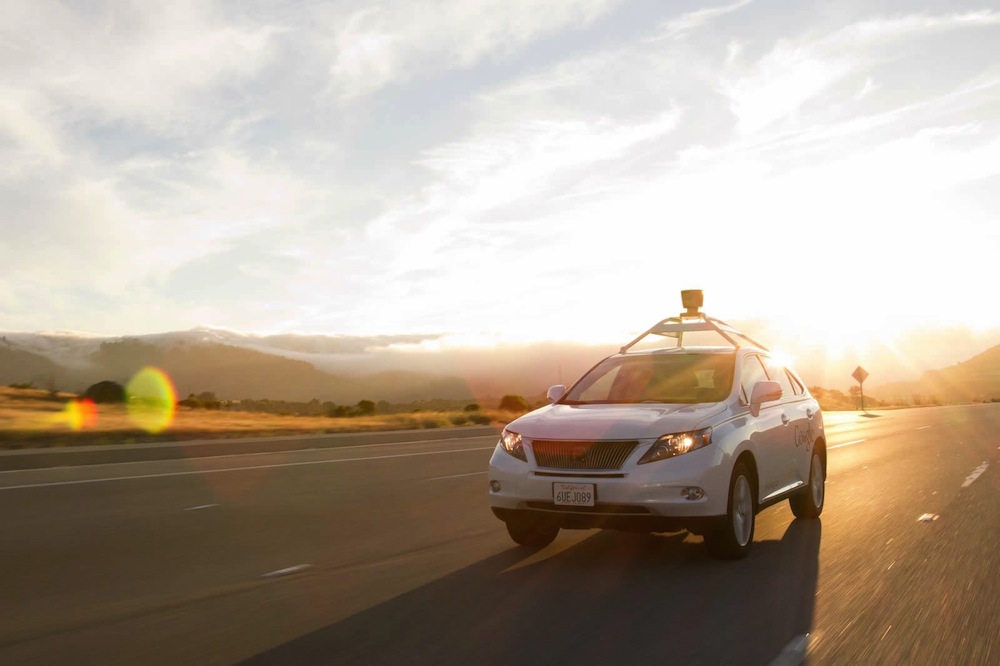Google Self-Driving Car at Fault for Bus Crash

One of Google's self-driving cars crashed into a bus last month, marking the first time a vehicle in the company's robotic fleet caused a collision, according to an accident report filed to the California Department of Motor Vehicles (DMV).
The report says the crash took place on Feb. 14 in Mountain View, California, between Google's self-driving Lexus RX450h and a public transit bus. The collision occurred after Google's autonomous vehicle (AV) came to a stop and tried to maneuver around sandbags that had been positioned around a storm drain, according to the accident report.
"When the light turned green, traffic in the lane continued past the Google AV," Google officials wrote in the report. "After a few cars had passed, the Google AV began to proceed back into the center of the lane to pass the sand bags. A public transit bus was approaching from behind. The Google AV test driver saw the bus approaching in the left side mirror but believed the bus would stop or slow to allow the Google AV to continue. Approximately three seconds later, as the Google AV was reentering the center of the lane it made contact with the side of the bus." [Photos: The Robotic Evolution of Self-Driving Cars]
The robotic vehicle was traveling at less than 2 mph (3.2 km/h) and the bus was traveling at about 15 mph (24 km/h) at the time of the crash, according to the report. There were no reported injuries, but the robotic Lexus RX450h sustained damage to the left front fender, left front wheel and one of the sensors on the driver's side, the report said.
"Our self-driving cars spend a lot of time on El Camino Real, a wide boulevard of three lands in each direction that runs through Google's hometown of Mountain View and up the peninsula along San Francisco Bay," Google said in a statement provided to Engadget. "With hundreds of sets of traffic lights and hundreds more intersections, this busy and historic artery has helped us learn a lot over the years. And on Valentine's Day we ran into a tricky set of circumstances on El Camino that's helped us improve an important skill for navigating similar roads."
A study published in October 2015 by the University of Michigan's Transportation Research Institute found that self-driving cars have a higher crash rate per million miles traveled than traditional cars, though the overall severity of crash-related injuries with autonomous vehicles was found to be lower than that of regular vehicles. At the time of the study, though, no self-driving cars were found to be at fault for the crashes they were involved in. But, it's important to remember that these findings are preliminary, the researchers said, because self-driving vehicles have spent significantly less time on the road — about 1.2 million miles (1.9 million km) compared with the 3 trillion miles (4.8 trillion km) logged annually in the United States by conventional vehicles.
"We've now reviewed this incident (and thousands of variations on it) in our simulator in detail and made refinements to our software," Google said in its statement to Engadget. "From now on, our cars will more deeply understand that buses (and other large vehicles) are less likely to yield to us than other types of vehicles, and we hope to handle situations like this more gracefully in the future."
Sign up for the Live Science daily newsletter now
Get the world’s most fascinating discoveries delivered straight to your inbox.
Follow Denise Chow on Twitter @denisechow. Follow Live Science @livescience, Facebook & Google+. Original article on Live Science.

Denise Chow was the assistant managing editor at Live Science before moving to NBC News as a science reporter, where she focuses on general science and climate change. Before joining the Live Science team in 2013, she spent two years as a staff writer for Space.com, writing about rocket launches and covering NASA's final three space shuttle missions. A Canadian transplant, Denise has a bachelor's degree from the University of Toronto, and a master's degree in journalism from New York University.









